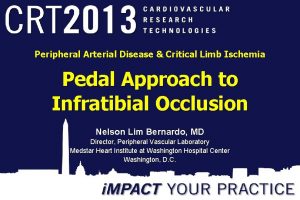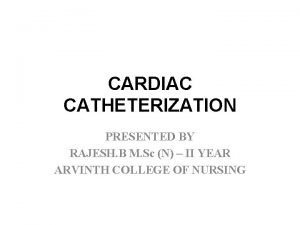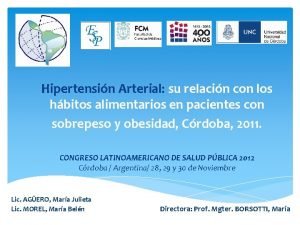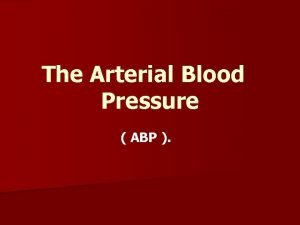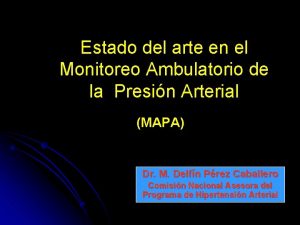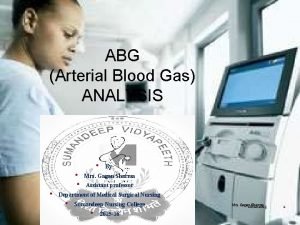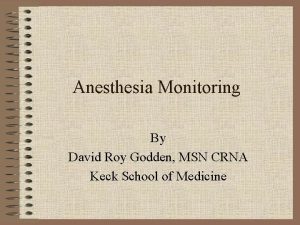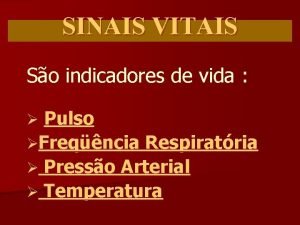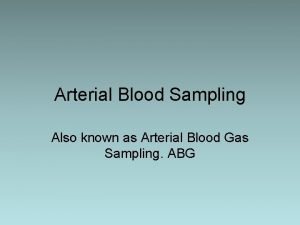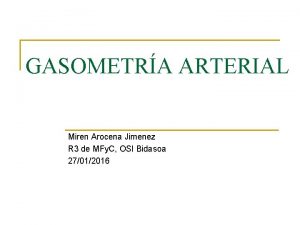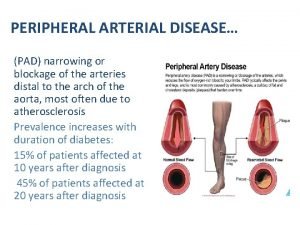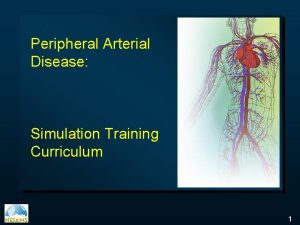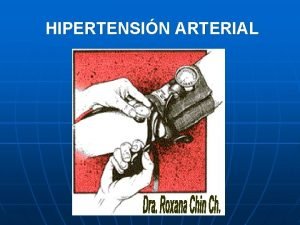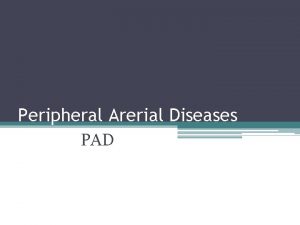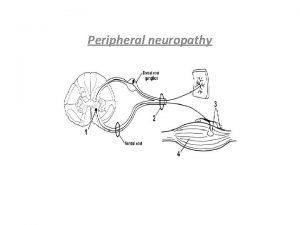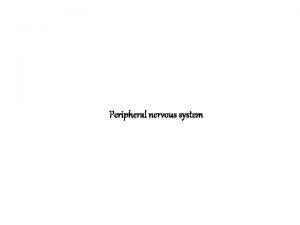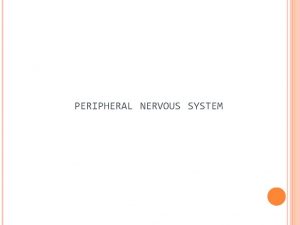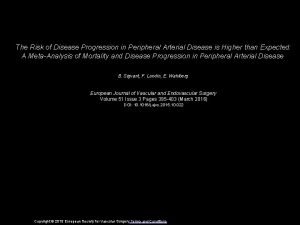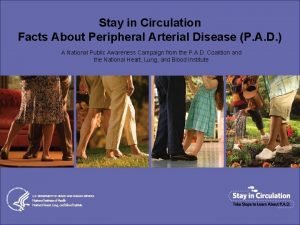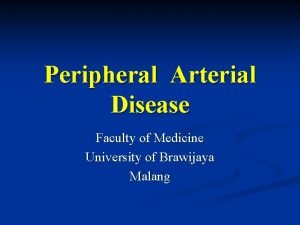Peripheral Arterial Disease PAD Peripheral Arterial Disease PAD

















- Slides: 17

Peripheral Arterial Disease (PAD)

Peripheral Arterial Disease (PAD) • All organs and tissues need oxygen & nutrients to function well. • This is achieved by arterial conduits called arteries. • PAD is a systemic disease of the large and medium size blood vessels causing partial or total blockage of blood supply to organs or limbs. • Most common cause is atherosclerosis.

Peripheral Arterial Disease PAD is caused by accumulation of fatty plaque and fibrous (scar) tissue deposits between and inner and middle layer of the arteries. American College of Cardiology Foundation/American Heart Association Task Force on Clinical Data Standards. Creager MA, Belkin M, Bluth EI, et al J Am Coll Cardiol. 2012; 59(3): 294. Epub 2011 Dec 5.

Peripheral Arterial Disease Ø PAD occurs in 12 to 20% of people over 65 Ø 12 to 20 million people in the US have PAD Ø World wide 3 to 12% of the population have PAD Ø In Europe & North America 27 Million and 413, 000 hospital admissions due to PAD Source AHA & Intersociety consensus J Vasc Surg; 2007, 45 Suppl S: S 5

Peripheral Arterial Disease Risk Factors Modifiable Non-Modifiable • • Age Genetics (family history) Gender Ethnicity Intersociety consensus for management of PVD (TASC II) J Vasc Surg; 2007, 45 Suppl S: S 5 • • • Smoking High Blood Pressure High Cholesterol Diabetes Obesity Socio-Economic Status

Peripheral Arterial Disease Risk Factors Number of risk factors 0 Risk Factors 1 Risk Factor 2 Risk Factors 3 Risk Factors 4 Risk Factors Ref: JAMA. 2012 Oct; 308(16): 1660 -7. Incidence 9 per 100, 000 23 per 100, 000 47 per 100, 000 92 per 100, 000 186 per 100, 000

Peripheral Arterial Disease Diagnosis- Symptoms • • Clinical Spectrum Asymptomatic Mild Claudication Moderate Claudication Severe Claudication Rest Pain Minor tissue loss Major tissue loss

Peripheral Arterial Disease Diagnosis Simple painless test. • Ankle brachial index. • Measuring ankle pressure and comparing it to arm pressure. • Ultrasound imaging with color Doppler

Peripheral Arterial Disease Ultrasound Imaging Normal Artery with blockage

Peripheral Arterial Disease • • • Medical Therapy Exercise (treadmill or alternative) Smoking Cessation Diet Lowering Cholesterol Control Blood Pressure Control Diabetes • • Medications Statins – Lowering Cholesterol Aspirin Plavix (Clopidogrel) Pletal (Cilostazol) Meds for BP Control Meds for Diabetes Meds for smoking cessation

Peripheral Arterial Disease Treatment Minimally invasive treatments Angioplasty and stenting

Peripheral Arterial Disease Treatment Surgical Reconstructions Aortobifemoral Bypass

Peripheral Arterial Disease Treatment Surgical Reconstructions Femoral Popliteal Femoral Tibial Bypass

Peripheral Arterial Disease Prognosis Depends on associated conditions, Ex: heart disease. For Claudicants (leg pain while walking) Stable Claudication: Worsening Claudication: Limb threatening ischemia: Ref: 2006 Oct 31; 114(18): 1914 -22. Epub 2006 Oct 23. 70 - 80% 10 – 20% 1 – 2%

Peripheral Arterial Disease Prognosis • Heart Attacks or Strokes in 20% • Death in 15 to 30% • 75% of deaths due to cardiovascular causes. Ref: N Engl J Med 1992 Feb 6: 326 -381(6) BMJ 1996: 313(7070) 1440.

Peripheral Arterial Disease Prognosis • • Ref: For Limb Threatening Ischemia Patients 1 year Results 45% Alive with Intact Limb. 30% Amputations. 25% Died. 60% Died in 5 years. Non-reconstructable disease 1 year results 55% alive with limbs 20% died 30% amputations. JVS May 2009; 50: 54 JVS Mar 2012; 55: 781 Lancet 2001; 358: 1257

Prepared By The Eastern Vascular Society Ad. Hoc Committee for Patient Education Branding and Outreach. Pathanjali P. Sharma, MD Penn State Health St. Joseph Medical Center
 Peripheral arterial disease
Peripheral arterial disease Pulses location
Pulses location Differentiate between storied and non storied cambium
Differentiate between storied and non storied cambium Bharathi viswanathan
Bharathi viswanathan Brachial cutdown
Brachial cutdown Objetivo de la hipertensión arterial
Objetivo de la hipertensión arterial Monochorionic monoamniotic twins
Monochorionic monoamniotic twins Arterial spray definition forensics
Arterial spray definition forensics Systolic and diastolic pressure
Systolic and diastolic pressure Terminologia da pressão arterial
Terminologia da pressão arterial Dipper mapa
Dipper mapa Normal blood gas values
Normal blood gas values Seldinger technique
Seldinger technique Pulso pedioso
Pulso pedioso Arterial vs venous end of capillary
Arterial vs venous end of capillary Lesão cistica
Lesão cistica Presin arterial
Presin arterial R
R
